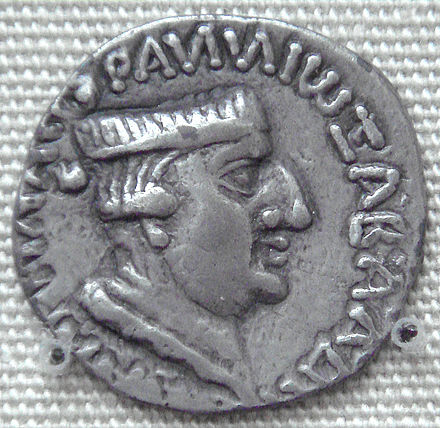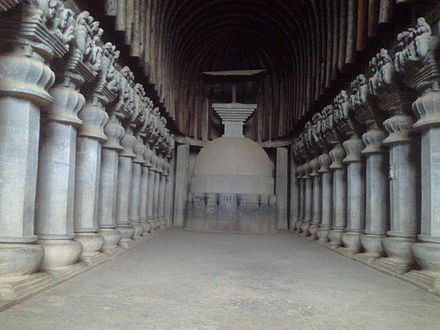Rudrasimha II
| Rudrasimha II | |
|---|---|
| Western Satrap king | |
 Coin of Rudrasimha II. | |
| Reign | 304-348 CE |
| Predecessor | Visvasena |
| Successor | Yasodaman II |
| Father | Svami-Jivadaman |
Rudrasimha II (304–348) was a ruler of the Western Satraps He declared on his coins to be the son of a Lord (Svami) named Jivadaman.[2]
His coinage is coeval with that of other rulers, who may have been sub-kings and were his sons: Yasodaman II (317–332) and Rudradaman II (332–348).[2]
During his rule, a Saka ruler inscribed the Kanakerha inscription,[3] on the hill of Sanchi mentioning the construction of a well by the Saka chief and "righteous conqueror" (dharmaviyagi mahadandanayaka) Sridharavarman (339-368 CE).[1] Another inscription of the same Sridhavarman with his military commander is known from Eran.[1] These inscription point to the extent of Saka rule as the time of Rudrasimha II.
Coins of Rudrasimha were found inside the Buddhist stupa of Devnimori in Gujarat.[4]
References
- ^ a b c Buddhist Landscapes in Central India: Sanchi Hill and Archaeologies of Religious and Social Change, c. Third Century BC to Fifth Century AD, Julia Shaw, Routledge, 2016 p58-59
- ^ a b Rapson (1908). Catalogue of the coins of the Andhra dynasty, the Western Ksatrapas, the Traikutaka dynasty, and the "Bodhi" dynasty. British Museum. Dept. of Coins and Medals. p. 170.
- ^ Marshall, The Monuments of Sanchi p.392
- ^ Schastok, Sara L. (1985). The Śāmalājī Sculptures and 6th Century Art in Western India. BRILL. pp. 23–31. ISBN 9004069410.


